- 1. Features of minimalism in landscape design
- 2. Characteristic features of a garden and landscape in the minimalist style include
- 3. Advantages and Disadvantages of Minimalist Landscape Design
- 4. Advantages and disadvantages of minimalist landscaping
- 5. Elements and zones of landscape design in minimalist style
- 6. Furniture and Accessories
Minimalist landscape design features simple geometric shapes, is modest in terms of decor, yet incredibly practical. You won’t see any unnecessary details on the site. The patio, pool, lighting, garden, paths, and water features are all aligned with the same concept that emerged in the early 20th century.
The main influence on the formation of ascetic and refined minimalism in landscape design was made by Japanese artists, architects, and decorators. Later, the style spread throughout Europe, becoming an integral part of urban architecture.
Minimalism is fresh, concise, and always technologically thought out.
Features of minimalism in landscape design
Modern minimalism, characterized by rigor, natural and quality imitated materials, calm color combinations, tends to be present in all areas of design. The design of a garden in a minimalist style is part of the overall composition of the courtyard area and, of course, the architecture of the house, as well as the fence and gates, should also be designed in the same style. Minimalism welcomes the arrangement of a sauna with a pool, the design of gabions and flower beds, but all these elements have extremely simple forms and correspond to a single style decision.

Minimalism in landscape design harmonizes well with the style of hi-tech or modern and, in principle, the elements of all these styles are interchangeable. However, when designing, the focus should be on practicality first and then on decorative functions.
Characteristic features of a garden and landscape in the minimalist style include
- Consistent geometry in the exterior design of garden paths, parking zones, playgrounds, fountains, gazebos, and pools.
- A lot of space, open and bright areas.
- Clean lines and simple designs, multi-level gardens.
- Restrained color schemes and decor.
- The absence of barriers and obstacles.
Spacious areas in the minimalist style do not necessarily require a large area. The ascetic direction is well demonstrated in the decoration of several hectares: visually expanding the boundaries of the front garden.
A monochromatic color scheme has a special impact on the arrangement of trees and mini-forests. Minimalism does not require color diversity. Against a monochromatic background, green plantations look brighter and more impressive.

Advantages and Disadvantages of Minimalist Landscape Design
Adhering to natural beauty without excess, and in harmony with internal balance, suggests limiting the color palette. In landscape design, you typically don’t find more than three shades. A creative yet free-spirited approach in minimalism doesn’t aim to create a bright and flashy design competing with other plots. Instead, it seeks internal harmony and convenience. This reason prompts decorators to decline an abundance of colors. The visual noise common in rococo and baroque distracts from the essence – contemplation.

Advantages and disadvantages of minimalist landscaping
Natural beauty without excess, in harmony with inner balance, suggests sticking to a minimal amount of color. Usually, landscape design does not contain more than three shades. A creative and at the same time independent approach, without following generally accepted standards, in minimalism is not aimed at creating a bright and flashy design that competes with other areas, but on harmony and convenience within itself. This is why designers refuse an abundance of colors. Visual noise, inherent in rococo and baroque, distracts from the main thing – contemplation.
At the same time, the austere design of the garden does not look unfinished – minimalism has many advantages:
- The style was and remains one of the most trendy;
- It looks fresh and non-standard;
- Fits into urbanism and integrates perfectly into a country plot;
- It can be combined with elements of loft, modern or eco.
There aren’t so many downsides to a “minimalistic” garden, mostly related to finding a designer, creating professional projects, and purchasing high-quality finishing materials. In minimalism, you will not find cheap imitations.
Some customers who have adopted the ascetic direction in their plots say that over time, the restrained design becomes monotonous—they crave colors and changes. However, adjusting the landscape image proves to be unproblematic. You can swap green plantings, add a few bright accents, replace tall plants with low-growing ones, and arrange garden furniture made of rattan or wrought iron, a gazebo, and a barbecue area on an already landscaped plot. The minimalist style accommodates adjustments if the design becomes wearisome.
Modern people choose this style for its practicality: minimal maintenance, watering, and pruning of overgrown plants do not take much time, and washing concrete paths is easy with a hose.
Elements and zones of landscape design in minimalist style
From a technical standpoint, landscape planning is a complex stage best left to an experienced designer. It calls for precise calculations, impeccable artistic taste, and detailed cost estimation. Despite its complexity, it makes sense—minimalism suits plots of any size. In a large area, you won’t feel emptiness, while a small front yard will convey a sense of space and freedom.
Unlike classic styles, minimalism doesn’t demand clear zoning—color, texture, and multi-level transitions create harmony in the garden.
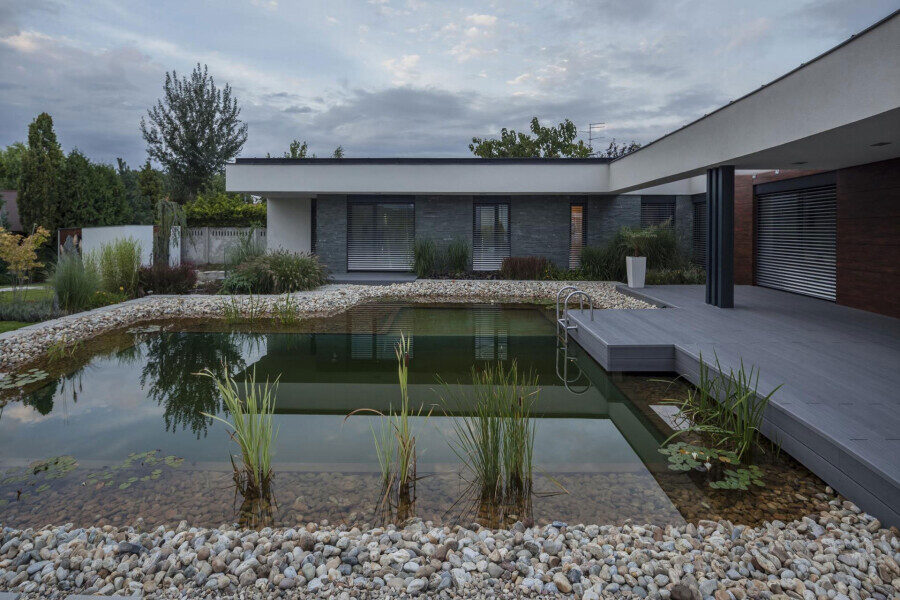
The lawn follows urban style principles. Typically, the grass is trimmed short, forming a uniform carpet without color transitions across the entire area. Other plants in the garden are either individually planted or composed. A sense of balance prevails, but decorative elements like vertical greenery and plantings in cylindrical, rectangular, or spherical containers made of ceramic, concrete, or stone still exist.
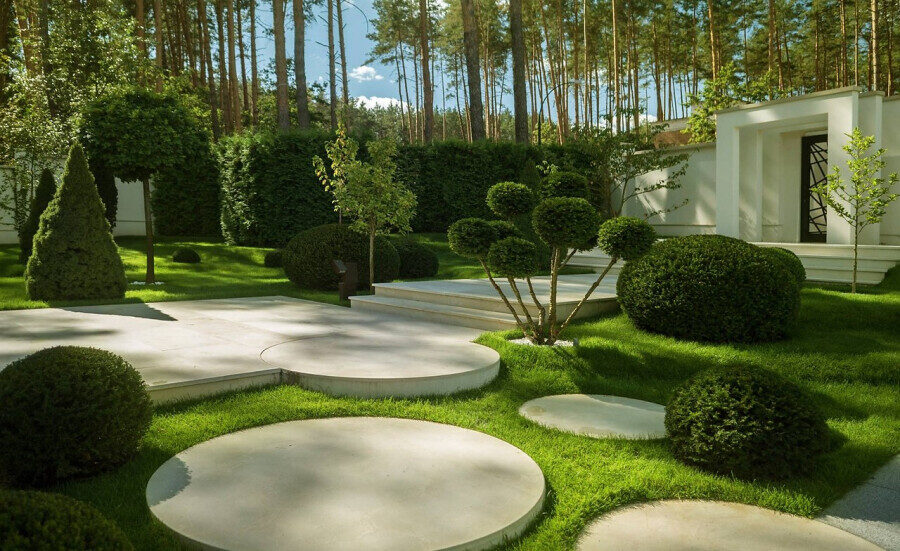
In minimalism, you can blend gravel beds, borrowed from Japanese gardens, with stone or concrete slab paving. Fill empty areas around planted vegetation with small gravel or pebbles. You can adorn areas in front of the entrance group with natural wood or stone slabs.


Furniture and Accessories
To decorate a minimalist style garden, you can use unusually shaped steps, raised flower beds, and plants in containers. Designer garden lighting, metal spheres, and boulder-shaped totems are also popular. However, avoid over-decorating—use individual details to adorn the relaxation area where garden furniture plays a crucial role. Hammocks, swings, and woven chairs usually have an oval or rectangular shape. Choose the sizes of sofas and chairs based on the area and the number of family members.
In a minimalist garden, stationary furniture is seldom used, as lightweight, portable furniture fits the modern style better. The exception lies in the barbecue area—stone and concrete tables suit these zones.



Minimalist-style lighting
Functional lighting requires powerful lamps – the plot should be safe for movement at night. Gardeners install devices around the suburban area’s perimeter. These provide ample light for driveways, entrance groups, garden walkways, the area near the gates, and beyond.
For decorative lighting, it is advisable to use crowning fixtures, and for accent lighting – pendant, ground-based, and built-in fixtures. Lower illumination of areas adds a special charm in the evening.
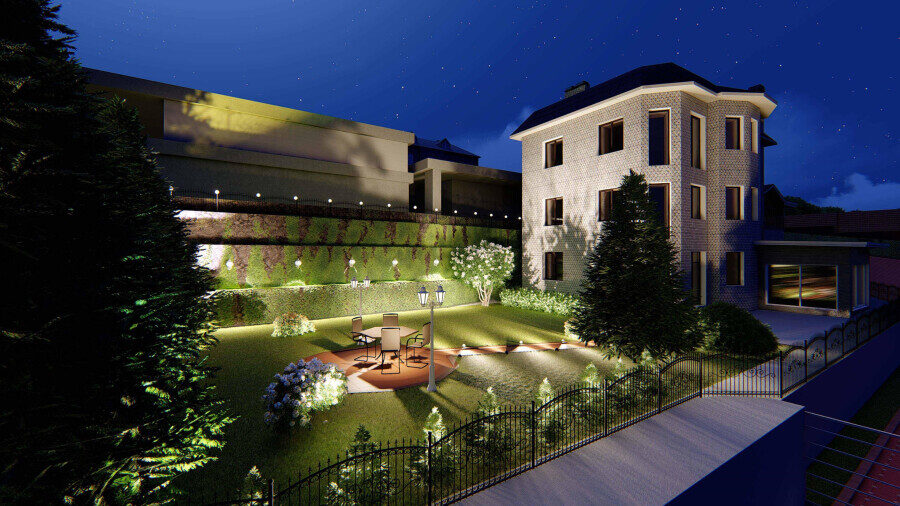

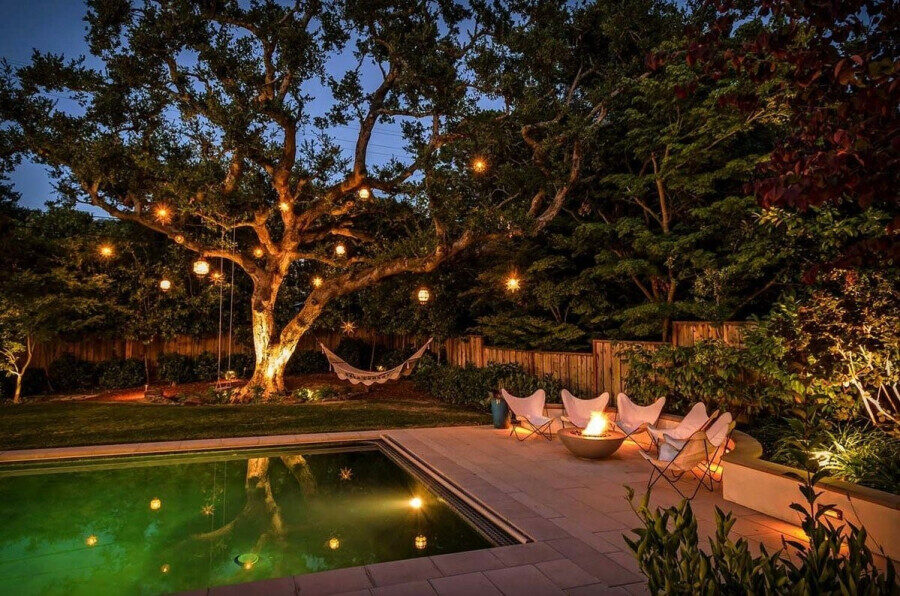
Minimalistic Plants and Compositions
Another key element to creating a minimalistic landscape is choosing the right plants. Within this style, plants can be low-growing or tall, but always follow a restrained color palette. Greenish-blue plants and shrubs look aesthetically pleasing and refined. Accent flowers and shrubs are not excessively colorful.


Simple monochromatic colors fit minimalist design best. Trees and shrubs like fir, cedar, juniper, weeping willow, and birch offer a restrained color palette. They enhance the beauty of the minimalist landscape without drawing excessive attention. Typically, you plant trees in the site’s background, while low-growing shrubs find a place near the house entrance.

In minimalistic landscaping, alongside gravel for areas around flower beds, gardeners use groundcover plants that form a dense carpet. Moss, Rubra plantain, thyme, and mossy stonecrop not only enhance the exterior but also serve a functional role by fighting weeds and maintaining cleanliness in the area.
Recently, decorators have begun incorporating vertical landscaping into minimalistic gardens. Plants like virginia creeper, kiwi fruit, and Chinese trumpet vine can aesthetically enhance the space. Minimalistic gardens typically feature selective vegetables, trendy herbs, and decorative shrubs composed of 2-3 species. Gardeners plant these in a strict sequence, choosing flowering plants in similar shades.


Small architectural forms

You should distinctly separate a minimalist-style garden from the rest of the area. Pedestrian paths and driveways should be clear and preferably orthogonal. Simple natural elements like trees, rocks, and hedges can function as borders.
For decades, European minimalism has borrowed ideas from other cultures. The modern minimalist style that has become traditional for us combines elements of Scandinavian, high-tech, modern, ecological styles, and Japanese culture, which has become the founder of ascetic exteriors.
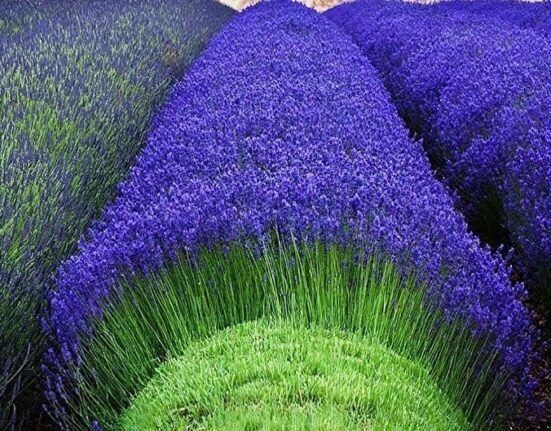

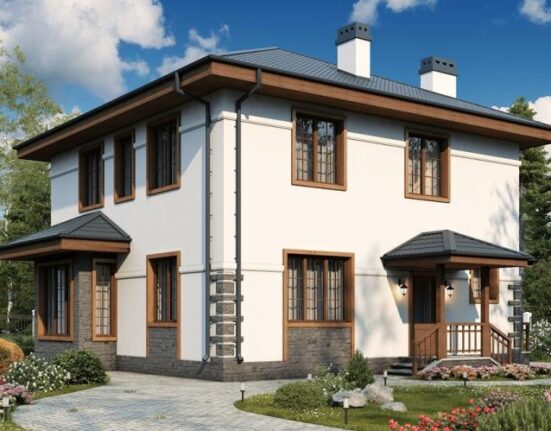

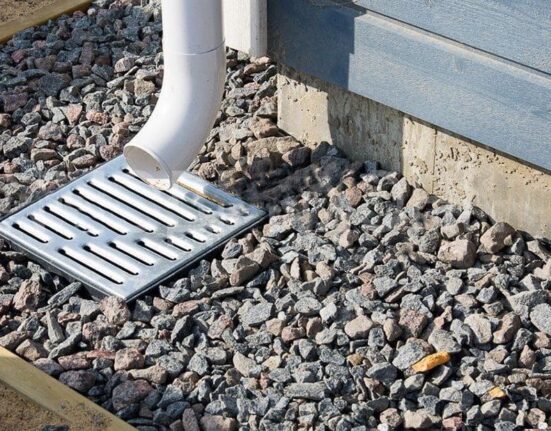
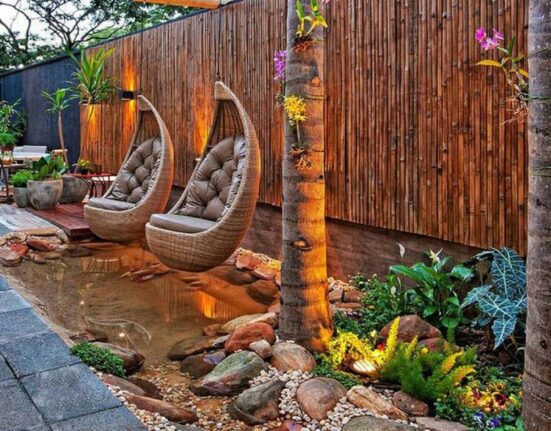
Leave feedback about this